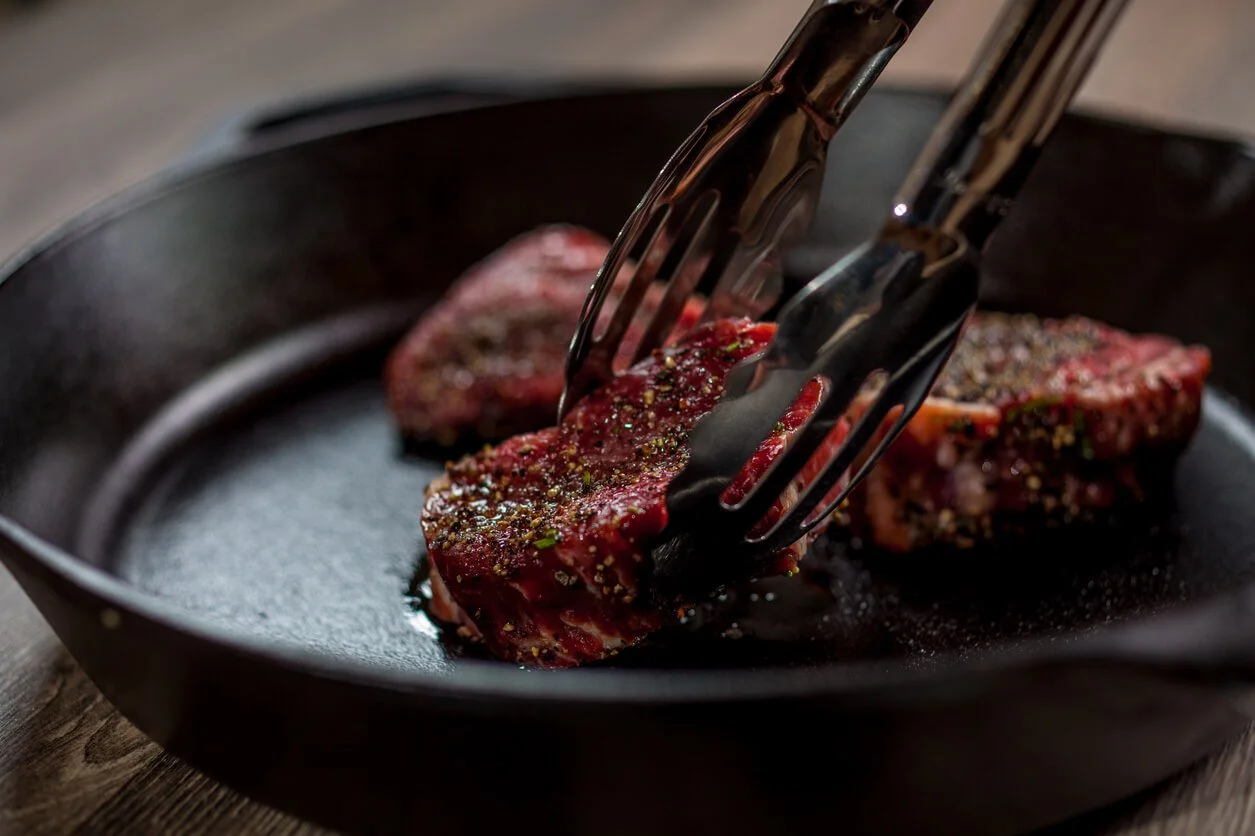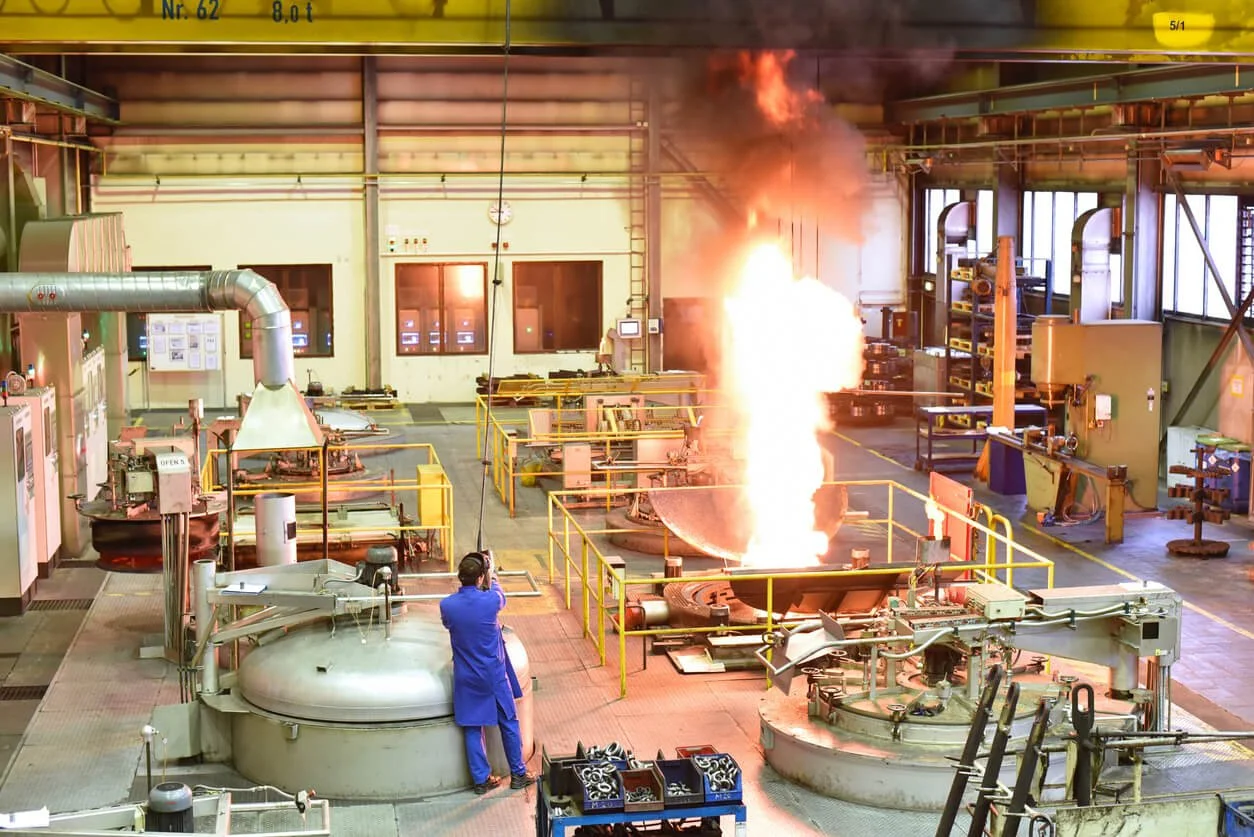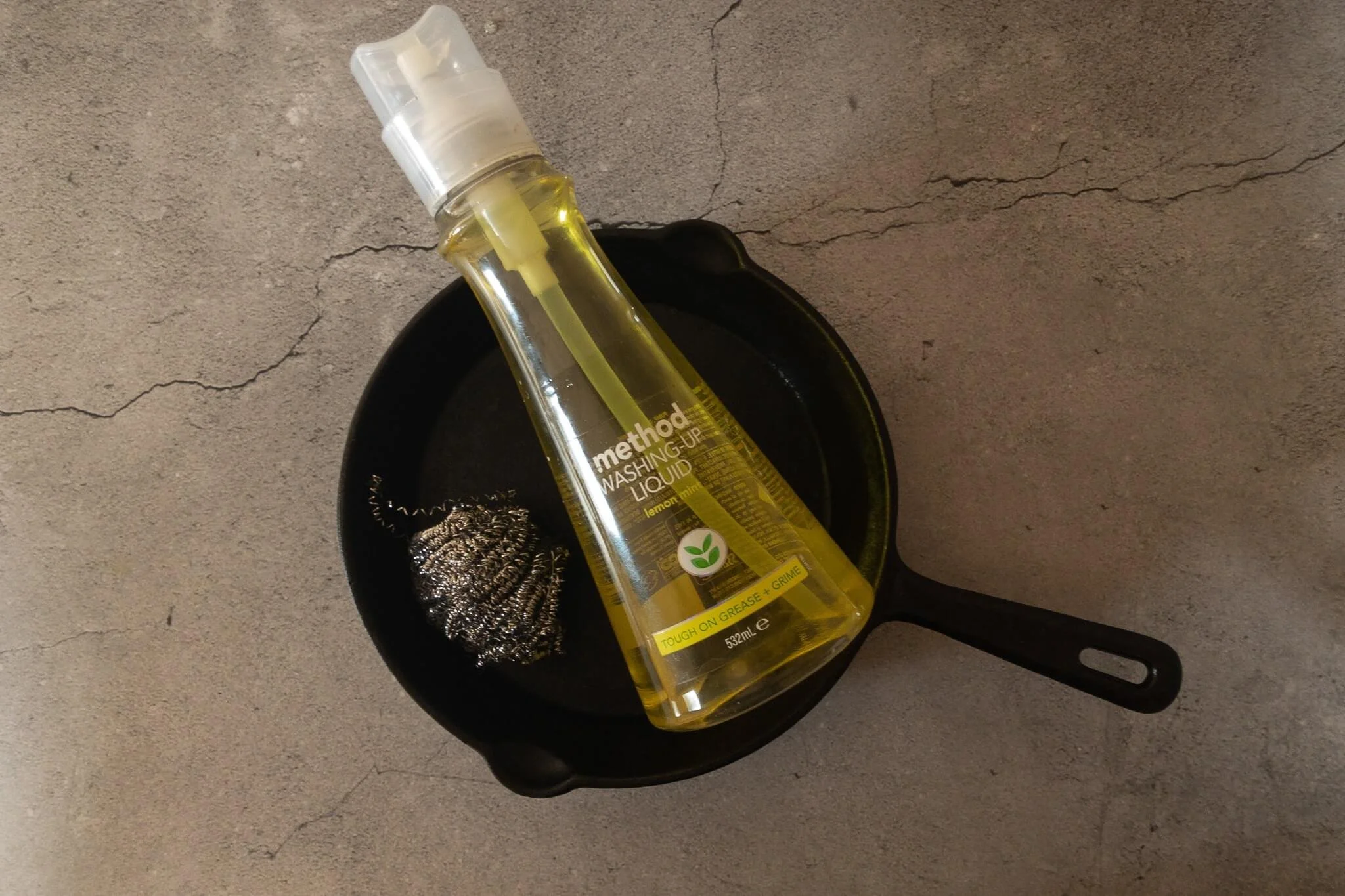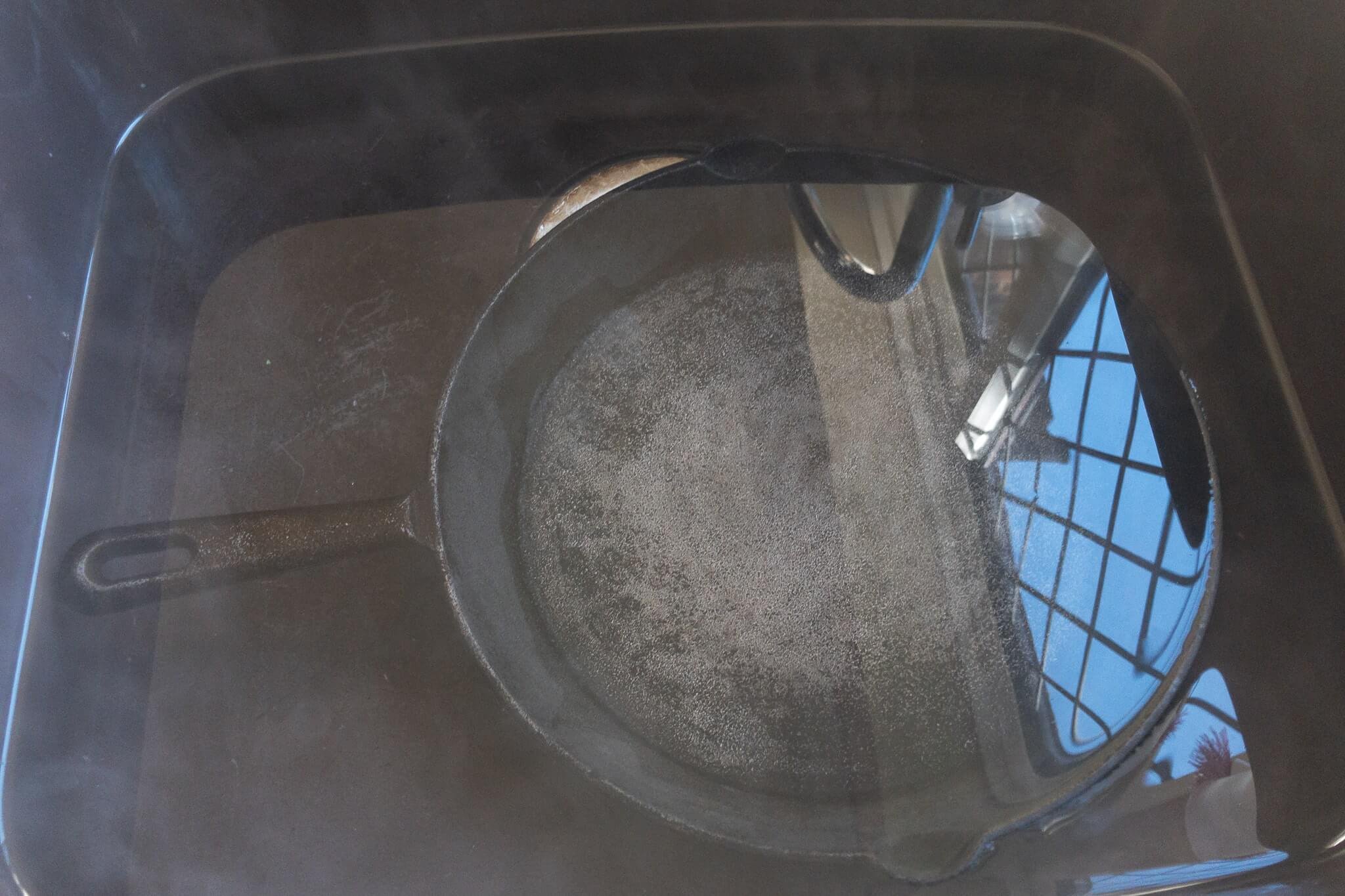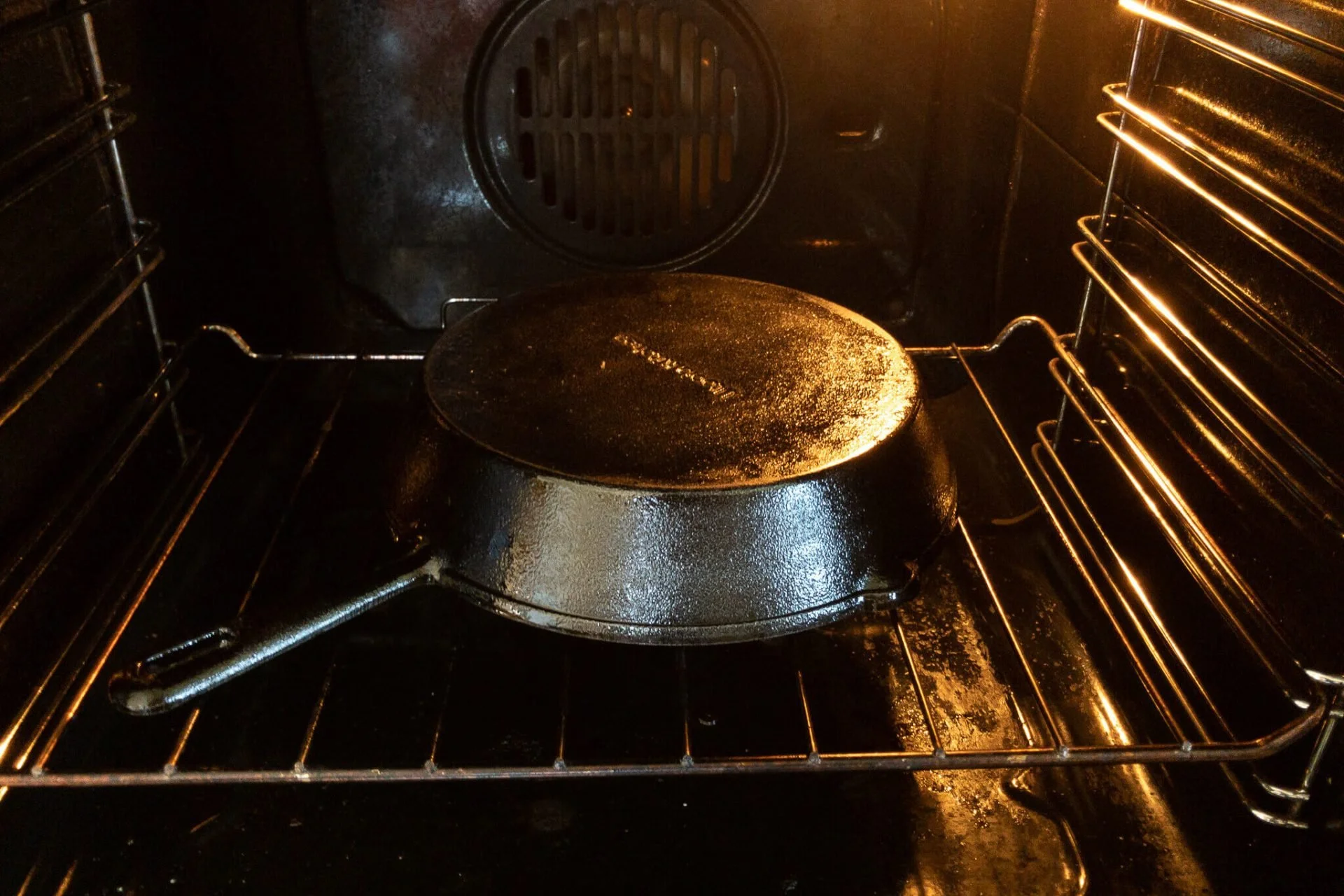How To Season Cast Iron
Discover > Texas Home Cooking > How To Season Cast Iron
Cast iron cooking equipment has been my personal favorite for as long as I can remember. Everything about it from its versatility down to the weight, it's one of the best ways to cook (and that's not just my opinion). Cast iron has is heavy-duty, which is my favorite thing about it, it can withstand really high temperatures, retain that heat, it can go from fire to stove to oven with no effort, and most importantly, they can last more than a lifetime. Iron can be used to make a wide vairy of kitchen products, pans, griddles, fryers, waffle irons, woks, panini presses, and more.
History
The first evidence of cast iron cookware dates back to 220 AD during the reign of the Han Dynasty in China. The first cast iron cooking equipment was a pot made from cast iron, usually with three to four legs so it can stand over a fire comfortably. Cast iron cookware was introduced to Europe in the early 14th century then became widespread and popular in the mid 16th century due to the invention of the stove, this saw the introduction of the cast-iron skillet into European and American homes.
The invention of the stove along with the innovation of the cast iron skillet, often credited to Abraham Derby who revolutionized the cookware in 1707, saw a huge uprising of the popularity of cast iron until the invention of lightweight, non-stick, Teflon coated frying pans in the 60s. The popularity of cast iron cookware declined so much that the majority of cast iron cookware producers either shut their doors or got absorbed into a larger cookware manufacturer. The 20th century also saw the introduction of the enamel-coated skillet.
As time goes by and science advances we learn more about the materials used in our daily cooking equipment. Things like that the Teflon coating used on those frying pans begins to break down at high temperatures which release chemicals like Carbonyl fluoride into the air. This caused the public view to speculate whether or not it's whats they want to be exposed to through their cookware, causing yet another soar of popularity for cast iron, this time in the 21st century. Non-stick cookware still remains the most popular throughout domestic kitchens due to a generation of conditioned advertising promoting the material.
How is Cast Iron Manufactured?
Cast iron is an alloy manufactured by melting pig iron (the result of smelting iron ore in a blast furnace) and adding carbon in the form of coke, and silicone. This process causes phosphorus and sulfur to burn off, causing valuable carbon to burn with it, so more material is often added. Cast iron is typically composed of 2-3% carbon, the carbon gives the iron hardness and allows it to become more malleable. The molten cast iron is poured into a mold made from a mixture of sand, water, and clay powder. The clay mold contains an impression or engraving design later visible on the skillet.
Cast Iron Cleaning & Seasoning
Cast iron should never ever go into a dishwasher. It's a quick way to ruin it. It should be cleaned with hot water and soap. There's a common myth that soap strips seasoning from cast iron, but if you seasoned the skillet right in the first place it shouldn't come off without a soak and really intense scrub with some wire wool. Whenever you buy a new cast-iron pot or pan you should clean it thoroughly with hot water, soap and wire wool, then seasoned. Some people believe that soap should never be used on cast-iron and some advocate that a mild soap should only be used while others swear by just wiping the cast iron down with a towel. Some cast-iron products come pre-seasoned.
Cast iron requires maintenance to prevent it from wear and tare, rust, and to create a stick-resistant coating. The seasoning is just a thin layer of polymerized oils and fats. Seasoning can be easily done at home with an oven and a high smoke point oil such as flaxseed oil. Acidic foods like tomatoes or citrus can break down this seasoning, after which you'd just have to season it again, cast iron should be seasoned regularly anyway so it shouldn't such a drag (around once a month depending how often you use it).
A cast-iron pan that is well seasoned has a high emissivity coefficient, which means they radiate infrared radiation which helps indirectly cook the food as well as heat conduction. This means when you fry a steak in a skillet, for example, the sides of the skillet will radiate infrared waves and cook the steak from the sides as well.
If your skillet is rusty this following first step to seasoning is essential, if it's not rusty, I advise you do it anyway because it'll make everything so much easier. Soak your skillet in a bath of 1:1 part vinegar to water. Soak them for at least 3 hours. I always say 4-6 hours depending on the condition of the skillet, but I always soak mine for at least 4. Also, use hot or warm water it'll assist the vinegar in breaking those little bonds.
After you soak the skillet, drain the water and prepare for maximum effort. Turn on the warm water, grab your soap and wire wool and get scrubbing. You're trying to scrub the layer of polymerized oil off the skillet so you can put a new on it. This layer of oil gives the skillet a non-stick function and protects the iron from damage. The skillet should look like this after it's been stripped compared to a seasoned skillet:
After you stripped the old oil off the skillet dry it off and get a bottle of oil with a high smoke point. Flaxseed oil works really well for this, some manufacturers make oils specific for seasoning cast iron but honestly, olive oil does the job. Grab a paper towel, fold it, dip it in some oil them coat the pan. Make a very thin layer because you're going to be repeating this span 2-3 times.
After you've painted over every surface of the skillet with oil, in all the holes and grooves as well, you're going to put it in the oven for an hour hours on very high heat, at least 400f. Bake it for an hour then let it cool off completely. Once it's cool, remove it from the oven, add another coat of oil then place it back into the oven for another hour. Repeat this step one more time if desired and bam, you've got freshly seasoned cast iron.


